IL-2: myths about the symbol of Victory
IL-2 is rightfully one of the most famous aircraft of World War II. A huge number of people know about him, having even the most distant idea of aviation. For the inhabitants of our country, this attack aircraft is on a par with a tank T-34, “Katyusha”, “one and a half”, PPSh submachine gun, identifying itself weapon Victory At the same time, and 75 years after the end of the war, the legendary Soviet attack aircraft, which fought from 1941 to 1945, is surrounded by a number of persistent myths.
The place of the air gunner on the IL-2 was the place of the doomed
Absolutely, we can say that the IL-2 became the most massive combat aircraft in stories aviation. The total release of attack aircraft exceeded 36 thousand units. This aircraft was actively used in battles in all theaters of operations of the Great Patriotic War, as well as in the Soviet-Japanese War. In total, from 1941 to 1945, the combat losses of the IL-2 attack aircraft amounted to 11 vehicles. Contrary to many beliefs, this is about half of all losses, a little more than 448 thousand aircraft were written off as non-combat losses (lost as a result of accidents, catastrophes, depreciation of the material part). For the entire time of the war, the losses of the flight personnel of attack aircraft are estimated at 11 12 people, including 054 pilots, 7837 - observer pilots, 221 - air shooters.
Judging by the figures of official losses indicated in his books by the candidate of historical sciences, a well-known specialist on the IL-2 plane, Oleg Valentinovich Rastrenin, the very first myth that the place of an air gunner on the Il-2 was the place of a finesman who has a chance to survive there were not many. Indeed, many attack aircraft were converted into a double version even at the front, literally in artisanal conditions, using everything that was at hand, and there was simply no talk of any protection of the air gunner. But the serial two-seater versions of the IL-2 did not have an armored cockpit of the air gunner, the only protection of which was a 6 mm thick armored plate, which protected it from fire from the tail of the aircraft. Despite this, according to official figures, losses of air gunners died less than pilots.
Most likely, this is due to the fact that by the time when the serial two-seater attack aircraft massively went into the troops, the "Ils" were flying on combat missions already accompanied by fighters. Such cover did not save the attack aircraft from meeting with enemy fighters, but the "flying tanks" received additional protection and support. At the same time, the loss of IL-2 aircraft from anti-aircraft artillery fire from the ground constantly increased until the end of the war, and from the attacks of enemy fighters, they fell. The probability of dying from anti-aircraft fire for the pilot and the shooter, apparently, was approximately equal.
Against the background of losses in the flight personnel of attack aircraft, it’s even a little disappointing that the image of a hero pilot, first of all a fighter pilot with his list of air victories, has formed in the mass consciousness. At the same time, attack pilots and bomber pilots were undeservedly relegated to the background. At the same time, people flying on the IL-2, acted primarily in the interests of the ground forces. Often the success of the ground operation and the breakthrough of the enemy’s defense depended on their competent actions. At the same time, attacks by protected targets and targets located at the forefront were associated with serious risk for attack crews, who were often met by massive anti-aircraft artillery fire, as well as all types of small arms. At the same time, attack aircraft also encountered enemy fighters. Each combat flight to the IL-2 was fraught with considerable risk. Therefore, all the pilots and air gunners who fought on the famous attack aircraft are a priori heroes, each flight risking their lives.
Armor IL-2 did not make the plane invulnerable
Today, the IL-2 is familiar to many, nicknamed the "flying tank." Some Soviet authors claimed that Wehrmacht soldiers called the Soviet attack aircraft "black death" or "plague," and Luftwaffe fighter pilots called the IL-2 a "concrete plane." Many of these nicknames clung to the plane after the end of World War II, it is very difficult to verify the veracity of their appearance and circulation. At the same time, the aircraft was really called a “flying tank”. So Sergei Vladimirovich Ilyushin wrote at the Air Force Research Institute about the need to create an armored attack aircraft or, in other words, a “flying tank”.
In reality, of course, no Il-2 tank was. It was an armored attack aircraft, which surpassed all Soviet aircraft in terms of security. The attack aircraft looked especially advantageous against the background of fighters, which in 1941 had to be used to attack German units. At the same time, not all elements were armored on the IL-2. The weight of the armored parts on the attack aircraft was estimated at about 950 kg, which amounted to 15,6 percent of the total flight weight of the aircraft. This is a worthy value, but it did not make the plane and the pilot invulnerable to fire from the ground and from air attacks.
Actual hostilities and conducted field tests showed that booking an attack aircraft did not protect the components of the aircraft and crew from the fire of 37, 30 and 20 mm shells of German artillery systems of both anti-aircraft and aircraft guns. Moreover, the armor was also vulnerable to large-caliber 13-mm machine guns. A direct hit of such ammunition almost always ended with the penetration of the attack aircraft armor, followed by the defeat of the aircraft crew and engine parts. The armor fully protected the crew and important components of the aircraft only from bullets of normal caliber, as well as most fragments of anti-aircraft shells that did not penetrate the armor, leaving only dents in it.
At the same time, the combat survivability system adopted and implemented on the IL-2 attack aircraft, based on the armored hull, which covered the pilot and vital parts of the attack aircraft, the tread on gas tanks and the gas tank filling system with neutral gases, was evaluated positively by aviation specialists. The measures taken, of course, played a role in the combat situation, more than once saving the plane and crew from death. But in full measure such protection no longer met the requirements of the unfolding war.
The Flying Tank was half wooden
Speaking about the IL-2 attack aircraft, one should not forget that it was not even an all-metal aircraft. Many structural elements of the famous "flying tank" were wooden. The first all-metal Soviet attack aircraft, which went into mass production at the end of World War II, was the Il-10, which was the product of a thorough modernization of the two-seat version of the Il-2 attack aircraft. This option received not only an all-metal building, but also an improved reservation, including a fully armored air gunner’s cabin, in fact, becoming the very attack aircraft that was originally conceived by Sergey Ilyushin.
At the same time, the IL-2 attack aircraft that fought on the fronts of World War II were mixed-design aircraft. The entire rear part of the aircraft was a wooden monocoque with a working lining, in the manufacture of which birch veneer and plywood were used. The tail fin was also wooden. Moreover, during the war years, part of the Il-2 attack aircraft was also made with wooden wing consoles, which did not add survivability to the machine. This was a necessary measure related to the loss of important aluminum smelters and a general shortage of aluminum products. It was used in the design of the IL-2 aircraft and the canvas.
In general, experts note that the design of even mixed-type attack aircraft was originally designed to withstand a large number of damage in combat conditions. No less important was the simplicity of the design. The aircraft was easy to manufacture and operate, including when repairing directly in the field. All this ensured high maintainability of the machines, as well as the possibility of mass production in the conditions of use of low-skilled workers.
The design bureau of Ilyushin provided the aircraft with such a margin of safety that it could withstand not only the use of low-quality materials in difficult wartime conditions, but also the use of unskilled labor in the assembly. With all this, the plane flew and smashed the enemy. It was possible to produce IL-2 in massive quantities, and its mass use at the front, multiplied by the gradual development of tactics of combat use, gave the Red Army the much-needed result on the battlefield.
Abstract military did not ask Ilyushin to make the plane single
There is a widespread belief that the idea to create a single-seat version of the IL-2 attack aircraft came from the military. That such a decision became erroneous and led to catastrophic losses of attack aircraft, especially in the first year of the war, when they often became victims of attacks by German fighters attacking “silts” flying without fighter cover, which turned out to be completely defenseless before the enemy from the rear hemisphere.
In fact, this is a stable myth in which the idea to abandon the gunner comes from either Stalin personally, who called Ilyushin for this, or some abstract military men who demanded that Ilyushin issue a single-seat version of the attack aircraft. In fact, the idea of building a single-seat version of the attack aircraft, which will become the IL-2 in the future, came directly from Ilyushin’s design bureau. Initially, the military wanted exactly the double version of an attack aircraft with an airborne gunner. However, the aircraft implemented by Ilyushin did not fit into the tactical and technical requirements of the military.
It was with this that the appearance of the single-seat version of the IL-2 was associated. Ilyushin tried in a short time to present such an aircraft that would fit into the tactical and technical requirements put forward by the Air Force. It so happened that the designer managed to achieve this only in a single-seat version. At the same time, the military were entirely for the double version of the attack aircraft, but only if it would satisfy the requirements for a combat vehicle. They did not refuse such a plane to the last.
Thus, the initiator of the alteration of the aircraft was Ilyushin himself. But this measure was compelled. The modified aircraft was distinguished by a reduced armored capsule, and in the place where the shooter used to sit, an additional fuel tank appeared. These decisions allowed to reduce the weight of the aircraft and improve the flight characteristics of the machine, which allowed to fit into the requirements of the military. At the same time, the cockpit was raised relative to the engine in order to improve its visibility. The resulting aircraft acquired a recognizable and characteristic profile for the IL-2 attack aircraft, for which the aircraft was affectionately nicknamed "hunchbacked." On the one hand, the decision to get rid of the gunner cost hundreds of pilots in the difficult months of 1941, on the other hand, the Red Army Air Force, in principle, was able to get a new attack aircraft, which they needed not today, but yesterday.
IL-2 was not a killer of tanks
The myth that the IL-2 attack aircraft was a real thunderstorm of German tanks is very stable. This is often spoken by both ordinary people and high-ranking Soviet military leaders recall in their memoirs, however, memoirs are a separate genre of military literature. For example, Marshal Konev is often credited with the words that if IL-2 gives an “Eres” of the tank, it will turn over. As you know, regardless of whether Konev once said this, in reality, everything was completely wrong. Even the direct hit of rockets in the tank did not guarantee the destruction of the combat vehicle, and the probability of getting into the tank was even lower.
To fight with tanks, even the initial period of the Second World War, the IL-2 almost could not. The effectiveness of its 20-mm ShVAK guns, and then the 23-mm VY guns was not enough to penetrate the side armor of even light German tanks. In fact, armor-piercing shells could hit German tanks only in the roof of a tower or engine compartment, but only during dive attacks, to which the IL-2, unlike the Luftwaffe's main tactical aircraft, the Ju-87 dive bomber, was not adapted.
The main way to attack ground targets for the IL-2 was a gentle dive and attack on a low-level flight. In this mode of attack, the armor penetration of aircraft guns was not enough, and it was difficult to effectively drop bombs, since the maximum accuracy of bombing was achieved only with a dive. At the same time, the IL-2 throughout the war lacked good sights for bombing. Stormtrooper sights included a simple mechanical sight with markings on the windshield and a front sight on the armored hood of the engine, as well as markings and sighting pins on the armored hood. At the same time, the pilot also had a rather limited view from the cockpit forward and down, as well as to the sides. When attacking ground targets, the massive bow of the aircraft very quickly closed the entire view to the pilot. For these reasons, the IL-2 attack aircraft was far from the best machine for attacking small targets.
The situation was partially saved by the appearance of more powerful 132-mm rockets of the ROFS-132 with improved accuracy of fire, which, if hit in the engine of a tank or self-propelled guns, could lead to the loss of a combat vehicle, as well as new small cumulative ammunition - anti-tank bombs PTAB-2,5 -1,5. The bomb was equipped in containers of 48 pieces, while the IL-2 could easily take four of these containers. The first application of PTAB on the Kursk Bulge was very successful. When dropping bombs, an area of 15 by 200 meters was easily covered. Such ammunition was very effective against accumulations of equipment, for example, on a march or in places of concentration. However, over time, the Germans began to disperse the tanks, cover them under the trees, pull on special nets and use other methods of protection.
With all this, it cannot be said that IL-2 did not fulfill its role on the battlefield. Even as he did, his tanks were far from his main prey. The plane coped well with the coverage of area targets, and mass production allowed the use of attack aircraft in large quantities. Il-2 was especially effective in attacks against unprotected and weakly protected targets: automotive vehicles, armored personnel carriers, artillery and mortar batteries, and enemy manpower.
Best attack aircraft acted against columns of enemy equipment on the march and stationary artillery positions. In such cases, when attacking, a certain amount of ammunition was guaranteed to find targets. This was especially important at the first stage of World War II, when the Germans made extensive use of their mechanized units. Any slowdown in the movement of enemy columns during air raids, even with insignificant losses for the enemy, played into the hands of the Red Army, which gained time.
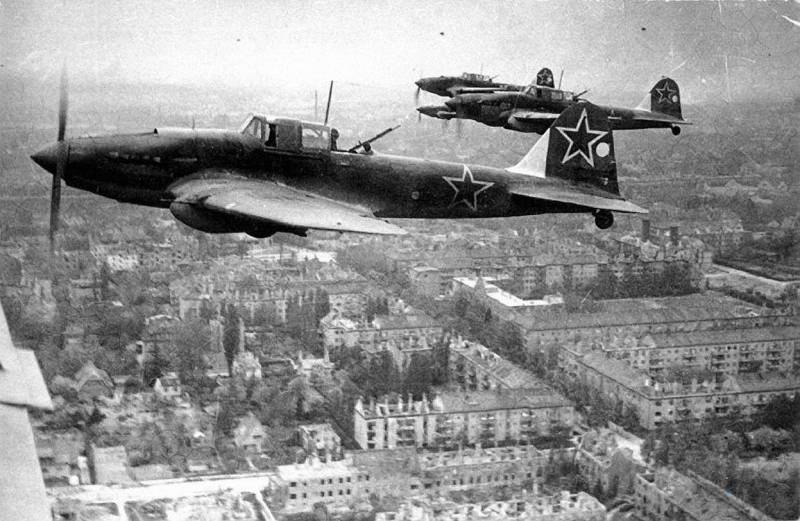
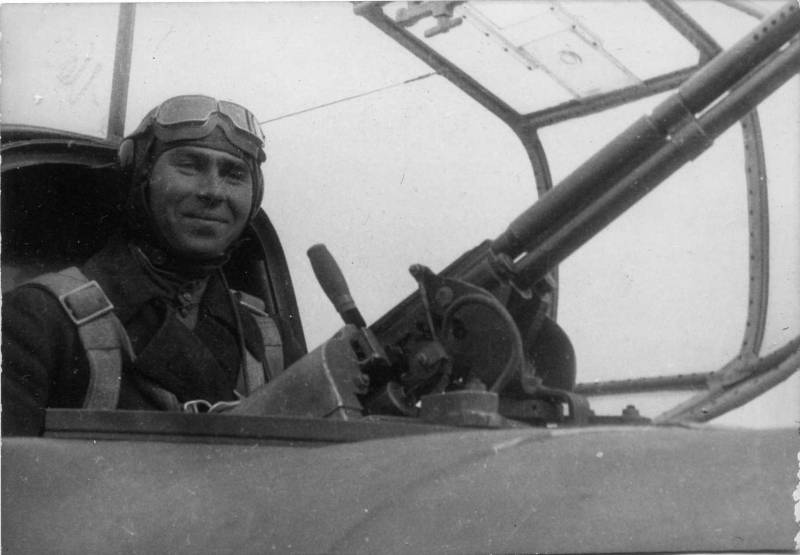
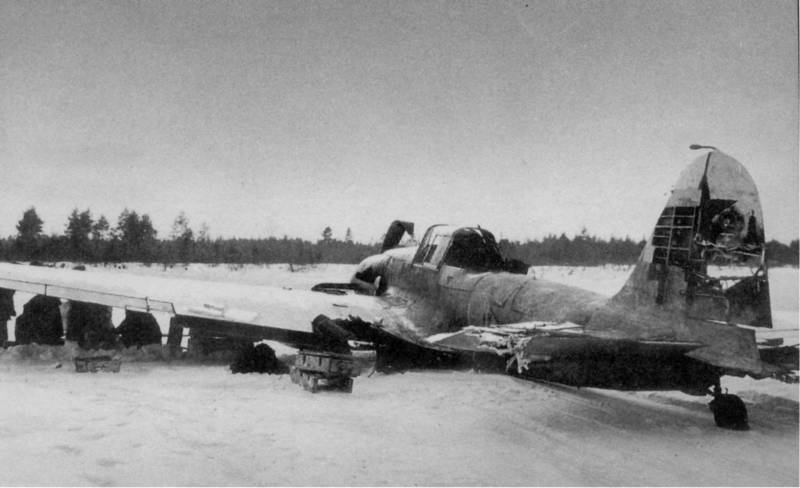
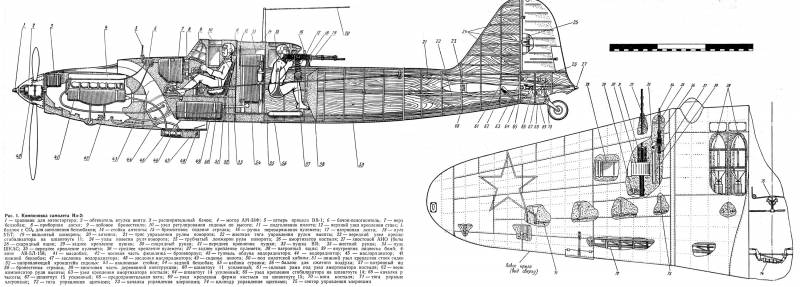
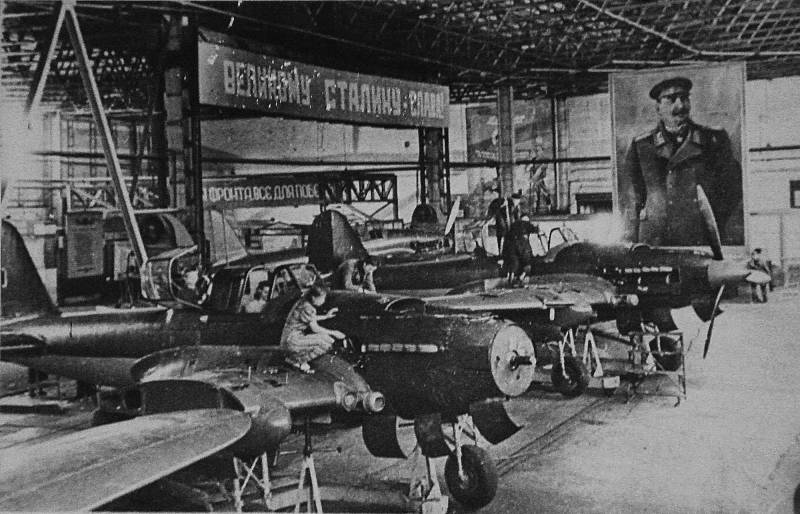
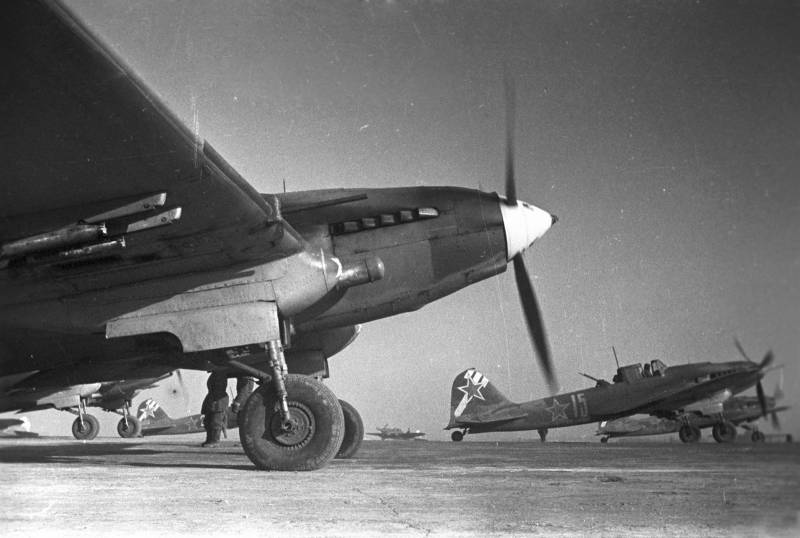
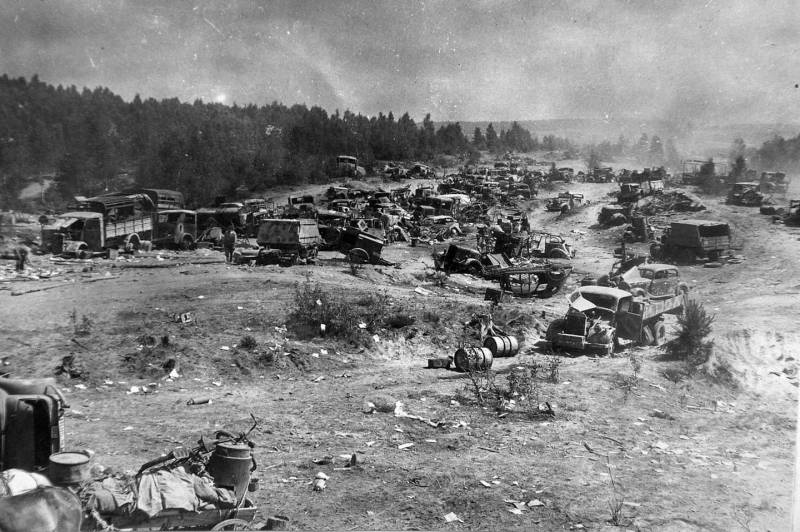
Information